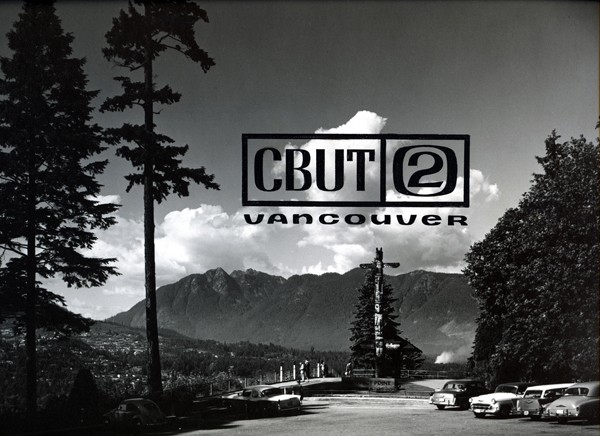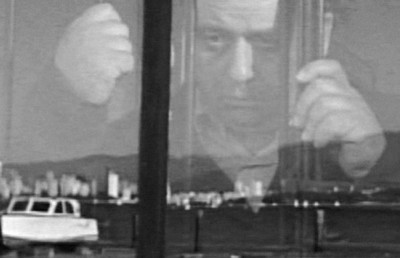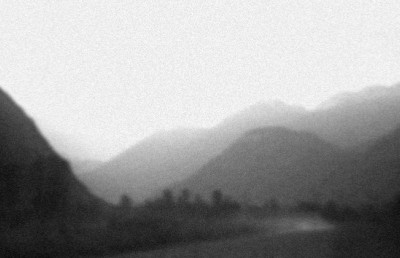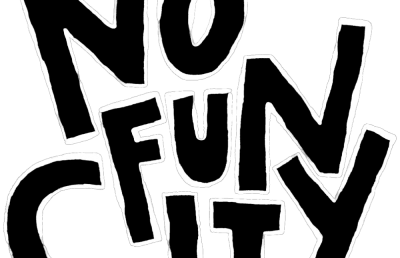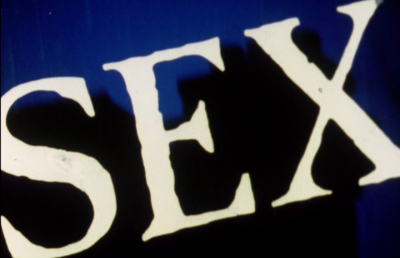Mediating Collaborations: Arla Saare, the CBUT Film Unit, and the Emergence of the West Coast School
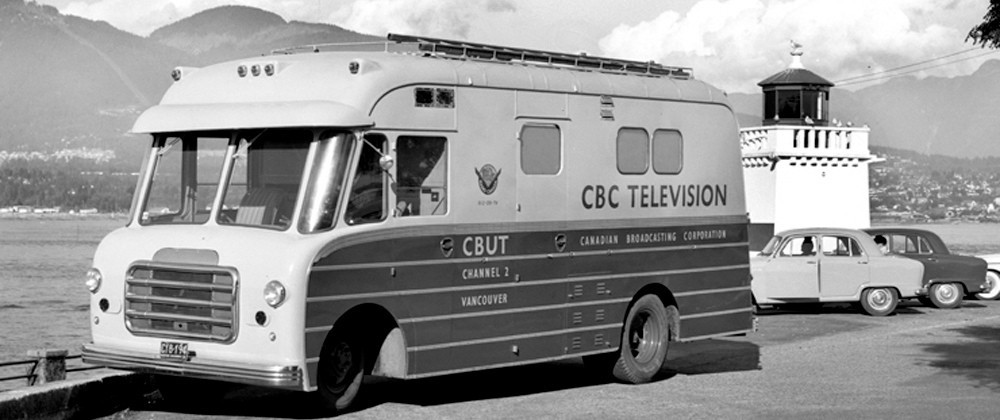
In 1961, the Montreal-based film journal, Objectif, offered a field report on Vancouver’s film scene. Their correspondent, Peter Morris, in his “Lettre de Vancouver,” 1 opens his remarks by pointing to the city’s isolation from Canada’s “principal cultural centres.” A “cultural backwater,” he declares. However, Morris asserts that nonetheless Vancouver is experiencing “a new and increasing vitality in film criticism and production.” Particularly with the initiation of a film festival in the mid 1950s, as well as the proliferation of film societies, Morris remarks that the cinema-going public is becoming aware of films offering scope and genre beyond the mainstream. Notably, Morris remarks that these new venues offer “increasing possibilities of exhibiting films of higher artistic merit.” Along with improving standards of film criticism, he claims that they have had a decisive influence on local production as well. Again earmarking the mid 1950s, Morris underscores that not only did film exhibitions in Vancouver “increase in quality and quantity” but most importantly its productions also underwent “an important and fundamental change in these last few years.”
Strikingly, Morris points to the advent of television in Vancouver as spurring this pivotal change. He remarks that especially the new Canadian Broadcasting Corporation television affiliate, CBUT, encouraged innovative production themes in contrast to the stock-in-trade themes that had been typical of the commercially sponsored documentaries and travelogues of the day. Interestingly, Morris chooses Allan King’s Skidrow (1957), Gene Lawrence’s Totem (1959), and Tom Connochie’s Mission Boats (1958) as exemplars of this production culture.
At the same time that Morris wrote his survey of the Vancouver film scene, another cineaste, Montrealer Claude Jutra, used “West Coast school of filmmaking” to describe CBUT filmmakers when interviewing Allan King on the occasion of the 1961 Montreal International Film Festival. 2 The notion of a “West Coast school” was further reinforced in 1964 by Guy Coté who orchestrated a program of CBUT films at La Cinematheque Canadienne to celebrate the twenty-fifth anniversary of the National Film Board of Canada. In addition, The Montreal Star’s veteran radio and television columnist, Pat Pearce endorsed this notion in her coverage of this NFB celebration. 3
To understand the emergence of this “West Coast school”, I suggest that Morris’s reference to the three films, Skidrow, Totem, and Mission Boats as exemplars of the CBUT canon is particularly telling. What united them into the seeming resilience of an indigenous and perhaps homogeneous tradition? Was it the directorial style? Was it the deployment of a common aesthetic lending to the articulation of a particular genre? Or, was it some medium-specific quality arising from technological deficiencies and adaptations that contributed to the film design; for example, the absence of synchronized sound or the modification of cameras to obtain close-up shots? Certainly, a resemblance may be found amongst these films given that the producers invariably shared common expectations and problems by working within the same environs and using the same resources.
However, there was one common and indelible element shared by these films that did not depend upon the “materials” of production. Rather, it depended upon the selection of the production personnel involved in this “collective and collaborative enterprise” of making the CBUT’s films. The element shared by these particular films produced by King, Lawrence and Connochie was one Arla Saare: head of CBUT’s editing department and editor on all 3 films . And these were but 3 of 44 films that Saare edited during her career at the CBUT during the period of 1953 to 1967.
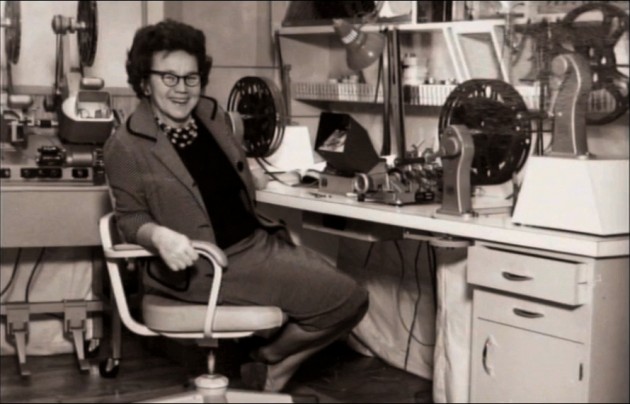
Saare at her Movieola
(From the documentary film Arla Saare, Christine Saarukka, 2009.)
For this generation of CBUT producers, Arla Saare as head editor was literally the visionary for the “West Coast school”. From her Moviola Saare mentored many aspiring producers. She mustered expression into their films by shaping them with her editor’s eye. Within the CBUT, she had a broad reach. Her influence extended to many other producers, as well; for example, Daryl Duke, George Robertson and Philip Keatley among others. Certainly, Saare was not their only mentor. Photographer Robert Reid was on hand as another CBUT staffer. Periodically, the National Film Board’s touted photographer, Jack Long, came on board CBUT productions. Members of the younger generation such as photographer John Seale made strong contributions, too. However, Saare was the seeming lynchpin. Her creative musings, editorial output, and administrative control at the CBUT reflected the pulse and timbre of this indigenous tradition as it evolved.
Rather than attempting to define the parameters of a “West Coast school” of filmmaking, I would prefer to illustrate how the attempts of others at applying this label to the films of the CBUT reflects a recognition of the film unit’s cohesiveness during this time. In this essay I argue that one cannot understand this cohesiveness without attention to the role of Arla Saare and how the collaborative environment in play during her years at the CBUT was a major contributing factor to the sustained vision of the film unit’s output. Drawing mainly on interviews I conducted with Saare and other key players at the CBUT, I will delve into the working relationships that made these films stand out on the national stage and make people take notice of what was going on in Vancouver in the 1950s and 60s. Saare emerges as a commanding figure at the film unit who, nonetheless, managed to inspire a spirit of collaborative tension that drove the filmmakers of the era to create works of profound local engagement. After charting Saare’s path to the CBUT in the early 50s, I will focus on a case study of one particular film, Rodeo, as emblematic of the working environment of the CBUT in Saare’s time. While contradictions abound in the various accounts of that film’s production, what remains clear is that Saare’s presence was an activating force within the unit, without which many of these films would never have been made. As such, any account of the regionally specific qualities of the CBUT’s output must begin with recognizing Arla Saare’s position at the film unit.
Saare’s Path to the CBUT
Saare initially studied ceramics at the Vancouver School of Art. Later, however, she was introduced to filmmaking, of a sort, as a technician at the Vancouver General Hospital. She developed the x-rays for its radiology department. With this experience in hand, Saare ventured out to Ottawa during the Second World War. She sought employment with John Grierson’s National Film Board. The Board hired her as a negative cutter and she rose to the rank of head of her department before the War’s close. Her career had begun, and in illustrious company. Saare served as the negative cutter for the animator and experimental filmmaker, Norman McLaren. However, at the War’s close, her job came to an abrupt end because men seconded to the war effort were now returning to their civilian positions.
Saare then learned that the CBC was recruiting staff to open new television stations across the country and that one would be in Vancouver. Hoping to get back home to the West Coast, Saare applied and she says “they hired me right away.” However, as the Vancouver station would not open for some time yet, she was first assigned to the flagship station in Toronto, where she says she found “the best job you could possibly have.”
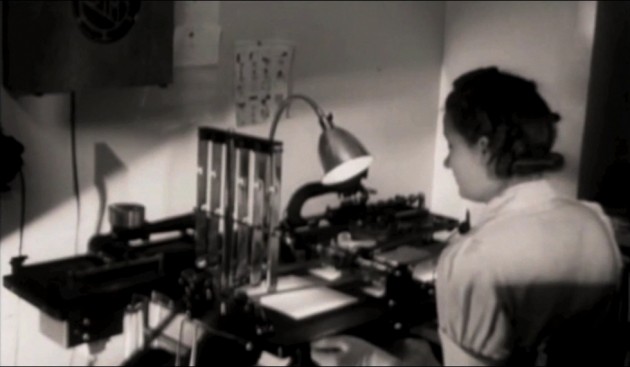
Saare at work at the CBC
(From the documentary film Arla Saare, Christine Saarukka, 2009.)
Saare became an editor in the newly opened CBLT newsroom. She remarks that it is the best job for a novice editor because:
You have got to make decisions fast. Film comes in. You are waiting for it. You know what the story is. But you’ve got to get it on the air in five minutes cut and spliced together and into the telecine. You don’t pause and think, “Is that shot any good?” You know what you have to do and you do it. 4
Saare continues:
You have to do it quick. I mean once you get the hang of it; that you have to remember in your mind how good some of the shots are and what is going to tell the story the fastest and get it on the air. 5
Saare quickly learned this lesson. In fact, she learned the pace of the newsroom on the day of CBLT’s inaugural ceremonies. Especially, she remarks on the potential for things to go awry over, for example, a “weak splice,” but that the newsroom attitude of a “combat battalion” was at the ready for any such mishaps. Saare recounts that the whole parliamentary cabinet attended and observed from the studio floor this launching of CBC’s flagship English Canada television station. In addition, American broadcasters such as ABC, CBS and PBS sent pre-recorded greetings. Saare’s task was to splice together their greetings congratulating Canada on starting television. Then much to her dread, on air, one splice broke. As Saare remarks, she “crawled to her hands and knees” and asked her boss, “Am I fired now?” His simple retort was, “Get up off your knees and splice it together. Hurry up! Get Going!” With that, Saare figured that her apprenticeship was done. “From that point on it was easy sailing,” she says.
Saare had been in Toronto for about a year when the CBC announced the opening of its Vancouver station in early 1953. Applying to Peter MacDonald, then head of television, Saare sought a transfer. Securing the position of head of CBUT’s editing department, Saare headed back to Vancouver.
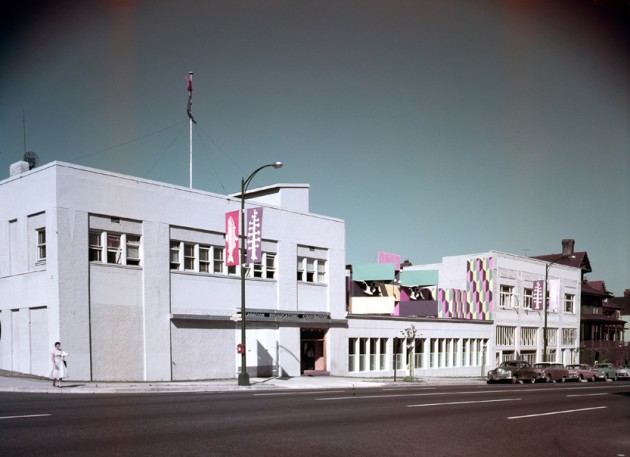
CBUT Studio Building at 1200 West Georgia, July 1958
Photo: Alvin Armstrong, CBC Vancouver Still Photo Collection.
Recalling how she obtained this position, Saare reveals her vulnerability during her early career:
Because I had been at the Film Board and done the editing at the beginning of when television started [in Toronto], they felt that I knew everything. And I let them think that I knew everything, but I didn’t. But I was acting like a very superior person because I wanted them in fear of me. 6
Saare remarks that Stan Fox was the first editor to work under her at CBUT. Eventually, another young editor, William Brayne, joined her staff. Unlike Fox who had been recruited from outside the corporation, Brayne had worked his way through the ranks. Fox brought experience from running a film society and a technical aptitude from making films and tinkering with film equipment. Brayne, on the other hand, gathered his experience on-the-job starting out as an office boy for CBC Radio. With such diverse talent offered by these and five other editors under her charge, Saare mustered a strong work ethic from them. She reports that:
Stan always said . . .we had a “tight ship.” I didn’t believe those kids [would] do anything if I didn’t keep my eye on them. So I was very bossy. I’ve been bossy all my life. 7
Saare delivers these last remarks remorsefully. While CBUT fostered an approach to filmmaking as a democratically disposed collective enterprise, there was nonetheless a competitive edge amongst its collaborators. This was spurred largely by the newness of this field of the arts. Many of the staff members came from other vocations and were determined to secure their credentials and reputations within it. Because of this, Arla Saare attributes her career success at the CBUT to sporting a definite brassiness in her dealings with colleagues. She claims that she was able to command attention and anchor her authority as an editor at the station by becoming an “austere figure.” Nowadays, she seems to regret the attitude she cultivated but interestingly she remains on the battlefield on matters of production credit. As to “who did what” under her supervision at the station, Saare maintains a firm view on the credit she deserves, as will become clear in the case of Rodeo.
The Case of Rodeo

Rodeo offers a clear example of the collaborative tension in play at the CBUT during Saare’s years there. The film came about as the result of one of Saare’s initiatives at the CBUT:
…during the summer, all the producers and directors were out shooting for their programs so [the] editors didn’t have anything to do. So I asked [the station’s program director] Marce Munro if he would allow the editors to make a ten-minute film on whatever they wanted to do. They were to prepare and shoot it, edit it and have it on the air as fill-ins sometime. And it worked out very well and it kept them busy. 8
Rodeo was one of these summer projects, and I enquired about the circumstances of its production. Being under the impression that William Brayne directed and photographed it, I asked, “What did you think of Bill Brayne’s film, Rodeo?” Rather tersely, Saare responded, “It was my film!” She further remarked, “Did Bill Brayne shoot some of it?” Since Saare did not recall Brayne’s involvement, I reviewed with her the production credits that Stan Fox detailed in his essay, “We Are Where We Come From: The Founding of a Film Community in British Columbia.” 9
The credits clearly spoke to Brayne’s key involvement. Certainly, he photographed it and Fox attributed the direction to him, as well. Nonetheless, Saare simply continues:
Yes, I decided to make a film . . . .so I did Rodeo. And come to think of it, you see I’d gone up into the interior with a writer who wrote on the Indians in the Interior, west of Williams Lake, the Chilcotin. 10
Remaining firm in her disposition, Saare went on to persuasively detail the making of Rodeo to support her initial claim. Consider her discussion of the film’s locale and its motif. More notably, consider the details that she provides about her execution of this project and the recognition that she received for it:
It’s a lovely place. That’s where the ranches are and so on. So of course, there are lots of horses and lots of cows and lots of cowboys around. And every fall they have a Rodeo. Well, it’s a week long drunken party. And they really have a rough and tumble Rodeo and they corral all the horses that they can, the ones that will buck. You know, new horses that aren’t trained. And I think it’s brutal now; I think that’s a brutal thing to show. But I used “Harold in Italy” as the music . . .. And I cut to the music. And I had a lovely time doing it and it took me a week to cut it and then I had it negative cut and printed up and music printed on it and it broke all records. Vancouver kept asking me for it to be on again because you know the amount of people in Vancouver and in the region, the Fraser Valley who have horses and loved that. And the [film], of course, hit the network in Toronto and that’s when they invited me to come to Toronto to work. 11
Saare omits discussion of the photography and certainly any reference to Brayne. Interestingly, she also omits reference to John Seale who shot additional footage for the film at her request. Saare’s entire demeanour about this film, as the texture of her commentary reflects, was one of being its sole author. However, her “claim to fame” becomes especially perplexing in light of Fox’s remark that “Rodeo was Brayne’s directorial debut.” 12
Why does Saare not mention William Brayne as either the photographer or director of this film? Is it a mere memory lapse? Saare’s account of the production details dispels that. However, why she indulges in this self-promotion amidst certain remorseful thoughts and recantations is, I suggest, of greater moment. Possibly, Saare’s self-promotion is the price that Brayne has paid for her mentoring on this film. She was Brayne’s department head and his summer project was under her auspices. Possibly and perhaps more tenably, it is the editing for Saare that serves as the locus of a film’s creation. It is, for example, not the photographer’s “hunting and gathering” of shots but rather the editor’s “harvesting” those shots into sequences that gives a film its narrative and form. Saare may be laying claim to how “she pulled the film together” and, as I shall detail shortly, Fox seems to validate this by his account of the film’s production. For example, Fox speaks of Brayne turning “the material over to Saare.” 13 However, I do not wish to accept her claim at the expense of discounting Brayne’s pivotal roles and I would be hard pressed to summarily dismiss his authorship.
How does Saare consider her former apprentice? She remarks:
I do know Bill Brayne because he was a young editor under me in Vancouver. And I thought he would have been happier out on the scene, out on the set as a soundman or a cameraman. I didn’t see him as being very imaginative. But then I didn’t know what abilities he had. And I don’t know. I don’t know. 14
We are perhaps witnessing some remnants of an ambivalence that Saare may have had towards him. I mean the kind of ambivalence that a teacher may feel when one of her students out steps her or leaves her to embark on his career. I note that Brayne certainly stepped “out on to the scene.” After all, for the bulk of his subsequent career, Brayne moved well beyond his initial steps from office boy to editor at CBUT, gaining ultimately an international reputation as a London-based photographer and director. We can only speculate that there may have been some element in their former relationship that has prompted Saare’s rather disconcerting disposition. At this moment, I am reluctant to pursue the enquiry that Saare was merely “flexing” her superior posture towards her former apprentice.
I shall bring Saare’s story to a close by citing directly from Stan Fox’s commentary on William Brayne and his involvement in the production of Rodeo:
The Vancouver Film Unit was itself producing a number of short but remarkable experimental documentaries. Among the first of these was Rodeo, an eighteen-minute film directed by Bill Brayne and edited by Arla Saare. Rodeo was Brayne’s directorial debut. He had been a successful, innovative editor at the CBC and would later establish a reputation as a dramatic director at the BBC. For Rodeo, Brayne shot hundreds of stills of the native peoples of the Cariboo country. He transferred those photos to film and supplemented them with footage of the local Williams Lake Rodeo, where the Indian and white populations meet in competition. He then turned the material over to Saare. She asked John Searle to add more footage and then designed a purely musical soundtrack. Rodeo won wide recognition, culminating in a screening at the Edinburgh Film Festival in 1963. 15
However, was Saare this austere figure? Is she worthy of this character assassination by her own hand? William Brayne would vehemently disagree with her self-portrait. Brayne remarks:
She was very, very, very popular. I never heard anything derogatory about her. Not in all seriousness. I mean they might say that she ran a tight ship, but that’s not really derogatory. 16
Interestingly, preceding these remarks, Brayne was self-deprecating. He appears to use the same negative brush as Saare to paint his portrait:
At CBUT, I was the young guy in the film department, precocious little bastard probably. I must have been because I was very young to be doing all the editing. 17
In 1962, George Robertson produced and directed The Eyes of Children. Saare was his editor. This is his portrait of Saare:
Arla was a collaborator. She reacted to the footage as it came in, listened to my ideas as to how I wanted it arranged, would make suggestions if she thought of improvements, and then she would set to work with the utmost professionalism to make every scene evolve in the most natural way. As the film was being built, I could see it take shape in front of me. If it worked well, I probably thought this was a result of my own genius, and then later I’d realize that she had played a vital part in making it look as good as it did, and more than once rescued me from my follies. Of course the camera work was essential too. She was unsparing of sloppy photography (which didn’t happen often) but she also knew that the cameraman was often working with material over which he didn’t always have control. She didn’t waste time on recriminations. When something really displeased her, she had recourse to a Finnish oath: it began with a “P”, and fortunately I can’t remember the rest of it. She assured me it was a bad word. I have no memory of our “technical” discussions, although we must have had them. What I do remember is coming to work every day with a feeling of joyful anticipation, and the assurance that there would be laughter in the room. 18
Proximities
Outside of a few personal reflections of my own, for the present purposes, I wish the reader to experience Robertson’s account of Saare as collaborator as final words on the subject. For conference purposes, I had handed over to Allan King these final words of testimony to her remarkable artistic and collaborative abilities. 19
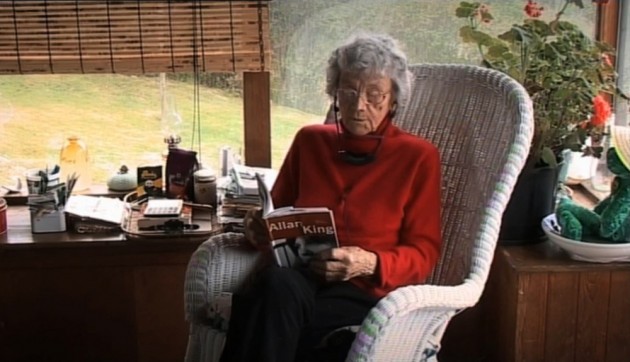
Saare reading from Allan King’s essay “Apprenticeship”
(From the documentary film Arla Saare, Christine Saarukka, 2009.)
To be sure, her extensive collaboration with King gained her much notoriety in the industry; and is perhaps the most documented. 20 However, Robertson’s words bring back for me sharply my most cherished image of this now departed film artist Arla Saare (deceased, 9 May 2013); the image I was privileged to witness unfold before me in interview with her on 11 November 2006. Robertson brought back for me with certain immediacy the contemplation and engagement Saare gave to her craft and her especial “humanness” that I suggest is etched upon the greater bulk of the films she edited.
Robertson’s The Eyes of Children was one of these films.[[The full half-hour film is available for online viewing on the CBC’s Digital Archive page: http://www.cbc.ca/archives/categories/society/education/a-lost-heritage-canadas-residential-schools/the-eyes-of-children—-life-at-a-residential-school.html. A film about an Indian Residential School in the early 1960s, Robertson handed Saare material from which she could pointedly negotiate her deeply rooted and passionate cinematic activism. An activism I learned on the day of interview that stems back to her own life experiences, especially as a child immigrant to British Columbia. From behind her Movieola, Saare brought this extraordinary empathy into her editing: intermeshing feeling with form, sparking feelings and emotional textures into the otherwise inanimate and disengaged images that lay before her. Saare articulated this empathy to me in words easily resonating with, I suggest, the agendas of today’s social justice seekers and human rights activists.
I had asked Saare whether there was one shot or sequence that stood out as particularly compelling and poignant in her editing career. Upon brief reflection, she mentioned a sequence she edited for one of Nancy Archibald’s installments of the CBC television program, The Nature of Things.
Saare remarked that Archibald had asked her to edit a film about a cancer ward in a Winnipeg hospital. She thought it “would be a piece of cheese” because the producers of this program were “very strict, no music, nothing, nothing to enhance the film.” Meeting seemingly the demands of a vérité documentary style, Saare exclaimed, “It’s got to be done with no tampering!” 21 She anticipated her task, I presumed, to be largely mechanical and offering welcomed detachment.
However, I then witnessed Saare become quite subdued. She proceeded to tell me in a voice tinged with certain melancholy about one particular sequence of shots she discovered amongst the daily rushes for this installment. Contrary to her expectations, Saare discovered shots deeply engaging and demanding her uncompromising commitment as an editor. Reflecting her astonishment, she stated, “I came across one shot and I couldn’t believe my eyes!” She continued, “It was so beautiful I even cry now thinking about it.” Saare spoke of its details with a measured care and gentleness:
There was a nurse and the nurse is looking down. The camera gets her close-up on the eyes and the face and follows her hand going down. She picks up a spoon and fills it and hands it to a little child. She feeds him with one spoonful. The camera goes up to the child, the eyes looking up at the nurse and the camera follows the eyes up and she is looking down lovingly at this kid.
Saare then answered my question:
That’s the most effective shot I have ever seen in all my life and it was natural. It was so natural that I even shiver thinking of it. 22
Saare then emphasized that within the haystack of footage usually bestowed upon the editor, these are the kinds of shots or sequences that make their quest. They were, to be sure, the exemplars of cinematic craftsmanship she sought after. This sequence in particular, I suggest, was especially emblematic of and foundational to the vantage point Saare held on the human condition spurring her orientation, agenda and craftsmanship as editor; a vantage point stemming from her own experience of poverty, assimilation, family life, fatherlessness, sibling relationships and especially her close relationship with her mother, one which extended deep into her adulthood as her autobiographical and other biographical accounts testify. 23
In this respect, proximity in human relations and the measuring thereof was vitally important to her. I suggest it was the yardstick Saare ultimately applied towards her editing decisions and significantly in fostering almost familial-like relationships with her collaborators. Saare took care of her directors much in the same way as she took care of her siblings. By the same token, she honoured and respected her directors much in the same way as she honoured her mother. And these were the cornerstones of her mentorship at CBUT.
As philosophers offer intellectual autobiographies to demonstrate the development and lineage of their ideas, I suggest that Robertson’s The Eyes of Children offers Saare’s artistic autobiography. I believe that no other piece that she has edited reflects by way of image compilation and emerging storyline as exacting a portrait of Saare. In my view, almost transparently, this film casts a reflexive image of Saare: her compassion, her vulnerability, her collegiality and mentorship along with her sensitivity and sensibility towards this artistic medium and its subject. Here, more than in any other place within her repertoire, we witness her thesis on the fragility of the human condition; and no less than under the auspices of the literary-minded and congenial soul of George Robertson.
Amplifying my defense of these latter claims respecting the Saare—Robertson team shall have to be the stuff of a future paper. For the present purposes, I have drawn attention to it to provide some greater illumination on the collaborative workings, creative machinations and aesthetic outcomes of the earlier film, Rodeo.
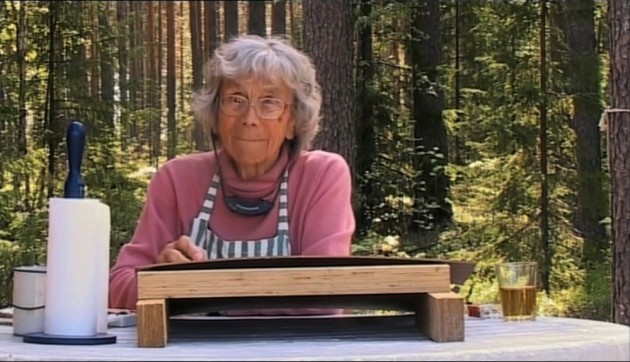
Saare painting in her back yard
(From the documentary film Arla Saare, Christine Saarukka, 2009.)
Acknowledgments
This paper was presented at the Film Studies Association of Canada annual conference in Victoria, BC on 5 June 2013. It is a revised excerpt from my Major Research Paper, “Friendships and Frontiers: Aspects of Collaboration and Place in Allan King’s Early Documentary Filmmaking,” for the M.A. degree in Film Studies at York University. Completed under the supervision of Professors Seth Feldman and Michael Zryd in 2008, the research for this MRP was based upon interviews and archival materials provided during 2006-2008 by Arla Saare, Allan King, Phyllis King, William Brayne, Robert and Sara Turner, Stanley Fox, Rolph Blakstad, and George Robertson. I gratefully acknowledge their contributions, especially the latter three filmmakers who dedicated many hours towards my enquiries. Respecting access to and archival information on films, I acknowledge, in addition, the unyielding and invaluable assistance provided during this period by Colin Preston and Roy Harris of the CBC archives, Theresa Ho of Allan King Films and Dennis Duffy of the Royal BC Museum. Also, thanks are due to Jerry Zaslove, Zoë Druick, Randolph Jordan and Donato Totaro for taking an interest in and providing commentaries on my research subsequent to my degree completion; and to Stanley Fox, Colin Browne, Lianne McLarty and Randolph Jordan for their comments on this conference paper. On the occasion of its publication, I wish to acknowledge and honour the memory of my late parents, Gerald and Joyce Newman. Respectively, as producer and performer at CBC Vancouver, they introduced me to the institutional spheres of their artistic practices which contributed greatly, I suggest, to the autoethnographic perspective articulated in some aspects of this project. Last but not least, I wish to express my endless gratitude and appreciation towards my wife Haya Newman, brother Geoffrey Newman and our friend Kalli Paakspuu for their steadfast support throughout this entire enterprise.
Selected Bibliography
Allan, Blaine, Peter Harcourt and Seth Feldman. “Allan King Plus Three: An Interview.” Allan King: Filmmaker. Toronto: Toronto International Film Festival, 2002.
Brayne, William. Personal interview. 19 November 2006.
Browne, Colin. “Fugitive Events: A History of Filmmaking in British Columbia, 1899-1970.” Cineworks 2000: Twenty Years Of Independent Filmmaking In British Columbia, edited by Justin MacGregor. Vancouver: Cineworks, 2000.
Druick, Zöe. Allan King’s A Married Couple. Toronto: University of Toronto Press, 2010.
Duffy, Dennis J. Camera West. Victoria: Provincial Archives, 1986.
Feldman, Seth, ed. Allan King: Filmmaker. Toronto: Toronto International Film Festival, 2002.
Fox, Stanley. “We Are Where We Came From: The Founding of A Film Community in British Columbia.” Journal of Canadian Studies 16, no.1 (1981): 23-35.
Fox, Stanley. Personal interviews. 9 December 2006; 9 June 2007; 21 January 2008.
John-Steiner, Vera. Creative Collaboration. Oxford: University Press, 2000.
King, Allan. “Apprenticeship” in Seth Feldman (2002).
King, Allan. Personal interviews. 19 January 2006; 25 January 2007.
Morris, Peter. “Lettre de Vancouver.” Objectif. 1: 9-10 (1961): 52-5.
Newman, Timothy. “Questions and Request for Interview.” E-mail to Allan King. 21 January 2007.
Newman, Timothy. Friendships and Frontiers: Aspects of Collaboration and Place in Allan King’s Early Documentary Filmmaking. Major Research Paper. MA program in Film Studies. Toronto: York University, 2008.
Pearce, Pat. “A Salute To Vancouver’s CBC Film Unit.” The Montreal Star. 7 August 1964.
Robertson, George. Personal interview. 8 January 2007.
Robertson, George. “Working with Arla.” E-mail to the author. 12 November 2007.
Rosenthal, Alan. “The Fiction Documentary: Interviews with the Makers of “A Married Couple.” Film Quarterly 23.4 (1970): 9-33.
Rutherford, Paul. When Television Was Young: Primetime Canada 1952-1967. Toronto: University of Toronto Press, 1990.
Saare, Arla. Personal interviews. 4 October 2006; 11 November 2006.
Selected Filmography
Arla Saare. Saarukka, Christine, dir. Yleisradio, 2009.
Autobiography. Fox, Stanley, dir. DVD, date unknown.
Mission Boats. Also known as No More Strangers. 1958. Connochie, Tom, dir. 30 min., Canadian Broadcasting Corporation (as documented in Duffy, p.145), according to Colin Preston, CBC Vancouver archive librarian, this film is also known as No More Strangers (telephone interview, 9 October 2007).
Rodeo. Also known as Cariboo Rodeo. 1960. Saare, Arla, ed. Brayne, William and John Seale, pho. 18 min., Canadian Broadcasting Corporation (CBC Vancouver archives).
Skidrow. 1957. King, Allan, dir. 37 min., Canadian Broadcasting Corporation, 22 January 1957 (CBC Vancouver archives).
The Eyes of Children. Robertson, George, dir. Canadian Broadcasting Corporation, 1962.
Totem. 1959. Lawrence, Gene, dir. 27 min., Canadian Broadcasting Corporation (as documented in Duffy, p. 189).
Notes
- Peter Morris, “Lettre de Vancouver,” Objectif, vol. 1, no. 9-10 (1961), 52-54. This article was published in French. The translations are mine with the assistance of Ms Suzanne Hirschmann. All subsequent references to Morris are from this source. ↩
- “Allan King Plus Three: An Interview” in Seth Feldman, ed., Allan King: Filmmaker, 87-88. ↩
- Stanley Fox, Autobiography, DVD, date unknown: Fox details this NFB celebration and provides a visual of Pearce’s column in the Montreal Star dated August 7, 1964. ↩
- Arla Saare, personal interview, 11 November 2006. ↩
- ibid. ↩
- ibid. ↩
- ibid. ↩
- ibid. ↩
- Stanley Fox, “We Are Where We Came From: The Founding of A Film Community in British Columbia, 1945-70.” Journal of Canadian Studies, 16.1 (Spring, 1981), 30. I note that Dennis Duffy in his Camera West (Victoria: Provincial Archives, 1986), corroborates Fox indicating Brayne was both director and photographer, and Saare was the editor with John Seale also being listed as photographer (p. 167). However, Colin Browne in his “Fugitive Events: A History of Filmmaking in British Columbia, 1899-1970,” footnote 116 (in Cineworks 2000, ed. Justin MacGregor. Vancouver: Cineworks Independent Filmmakers Society, 2000) contradicts this claim by stating, “Saare directed and edited a twelve minute film entitled Rodeo” (p. 120). Strikingly, Pat Pearce in her Montreal Star column dated August 7, 1964 (as per footnote 8 above) contradicts Fox, Duffy and Browne by detailing Arla Saare as director and John Seale as photographer with no mention of Brayne as either photographer or director. The primary document, that is, the film itself does not resolve this issue of authorship. Its film credits make no reference to a director but state respectively that Saare was editor and Brayne and Seale were photographers for Rodeo. These credits are reiterated as such within the CBUT archival catalogue (as per communication with Colin Preston, CBC Vancouver media librarian). ↩
- Arla Saare, personal interview, 11 November 2006. ↩
- ibid. ↩
- Fox, “We Are Where We Come From: The Founding of a Film Community in British Columbia, 1945-1970,” 30. ↩
- ibid. ↩
- Arla Saare, personal interview, 11 November 2006. ↩
- Fox, “We Are Where We Come From: The Founding of a Film Community in British Columbia, 1945-1970,” 30. ↩
- William Brayne, personal interview, 19 November 2006 ↩
- ibid. ↩
- George Robertson, e-mail to the author, 12 November 2007 ↩
- At the 2013 FSAC conference in Victoria, BC, I screened Saare’s recitation of Allan King’s tribute to her in Christine Saarukka’s documentary, Arla Saare, broadcast on Yleisradio (the Finnish television broadcaster) in 2009. Saare was reading from page 52 top of Allan King’s “Apprenticeship” in Feldman (2002). ↩
- See, for example, Zoë Druick’s Allan King’s A Married Couple. Toronto: University of Toronto Press, 2010. ↩
- Arla Saare, personal interview, 11 November 2006 ↩
- ibid. Upon conducting further research and as per email communication with Roy Harris of CBC Toronto Archives dated 13 April 2007, I have speculated that the sequence which Saare points to may be found in an installment of the Nature of Things produced by Nancy Archibald entitled “Coming and Going” that was broadcast on CBC television on 7 February 1979 (see review here.) As per Harris, the archival record for this broadcast provides a synopsis that compares with the details Saare provided; notably, its production format was vérité style documentary, its filming location was the St. Boniface Hospital in Winnipeg and particularly that “the film shows how the relationships of both staff and patients develop in the caring circumstances surrounding death.” In addition, the record specifies Nick Evdemon as the cameraman for this installment. Save the viewing of this installment, there is a seeming likelihood that the sequence Saare has praised may be attributed to him. ↩
- In interview, Saare revealed a number of biographical details to the writer. However, Saarukka in her film, as noted above, greatly amplifies upon these biographical considerations by way of a narrative that includes interviews with Saare and extended family members, as well as introduces photographs and memorabilia tracing Saare’s emigration to Canada. The writer wishes to thank and acknowledge Saare’s nieces, ML Burke and Doreen Player for bringing this film to his attention, as well as provide other collateral information. ↩

